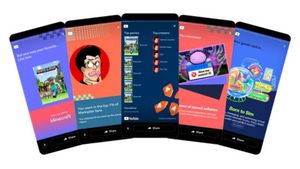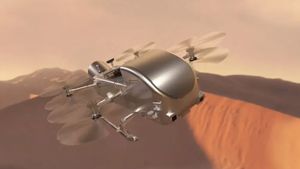JAKARTA - The American space agency (NASA) plans to create a 4G network on the Moon. For this reason, he took a cellphone manufacturer and poured an amount of approximately 14.1 million US dollars (US) to Bell Labs Nokia.
The plan, this project will be used on landers to the lunar surface by the end of 2022 in NASA's Artemis program. It is known, Nokia will cooperate with space company Intuitive Machines.
Not only Nokia , NASA actually gave 370 million US dollars to more than a dozen companies to spread technology on the surface of the Moon.
Companies that have received funding to develop technology in this area include Lockheed Martin $ 89.7 million, United Launch Alliance (ULA) $ 86.2 million, Eta Space $ 27 million, Alpha Space Test and Research Alliance $ 22.1 million. US dollars, and Elon Musk's SpaceX 53.2 million US dollars.
These include remote power generation, cryogenic freezing, robotics, safer landings and 4G networks. Because after all this network is needed by astronauts to communicate on Earth.
"A reliable, resilient and high-capacity communication network will be the key to supporting a sustainable human presence on the surface of the Moon," Nokia Chief Technology Officer Marcus Weldon said as quoted by ABC News , Tuesday, October 20.
In addition, astronauts will also use their wireless networks for data transmission, control rover on the Moon, real-time navigation over Moon geography (such as Google Maps for the Moon), and high-quality video streaming.
Get ready for liftoff ... We're teaming up with @NASA , @Int_Machines and heading to the Moon. 🚀 🌕
Learn more about how we're building and deploying the first ever cellular network on the lunar surface here: https://t.co/mJRVVoz3gv pic.twitter.com/X2bYhZ80P7
- Bell Labs (@BellLabs) October 19, 2020
That way, astronauts can share better photos and videos of their conditions and activities on the Moon. According to NASA, the 4G network can provide more reliable and longer distance communication than the current radio standards that apply on the Moon. As on Earth, the 4G network will eventually be upgraded to 5G.
The cellular network on the Moon will also be specially designed to withstand extreme activity on the Moon's surface, such as temperature, radiation and vacuum. The network also continues to function during lunar landings and launches, although when landing the rockets vibrate the lunar surface.
For information, the 4G network on Earth is supported by giant cell towers with enormous power and radio stations. But Nokia is helping create a smaller-cell technology that is more limited in reach, uses far less power than traditional cell towers and is easier to pack into a rocket. This small cell technology is currently being used for 5G networks around the world.
The English, Chinese, Japanese, Arabic, and French versions are automatically generated by the AI. So there may still be inaccuracies in translating, please always see Indonesian as our main language. (system supported by DigitalSiber.id)













